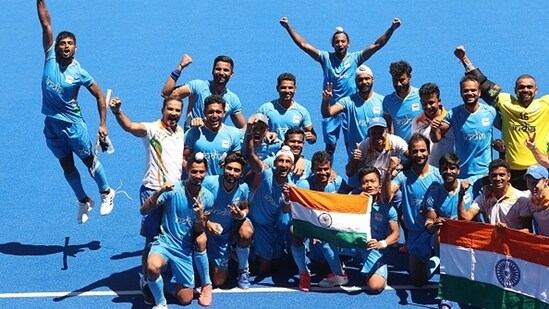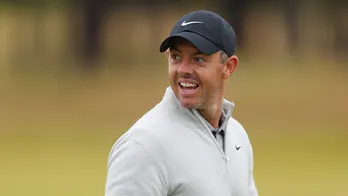How Punjab got 10 to podium in Tokyo
If the bronze in Tokyo is an important step in the revival of hockey - a sport in which India is the most successful team in Olympics history with eight gold medals, one silver and three bronze - it is appropriate that 10 of the 18 players on the podium on Thursday were from Punjab.  PREMIUM
PREMIUM
Through India’s consecutive gold medals from 1928 to 1956 and after, Punjab was to men’s hockey what Kenya’s Rift Valley is to long distance running - an assembly line of talent. The story of hockey Olympians from Sansarpur, a village in the Jalandhar district, is well known. So many from Punjab had won gold that when Balbir Singh Kular returned with an Olympic bronze in 1968, he said people looked down on them. There were five in the 1968 Olympics team from Sansarpur which has a dozen Olympic hockey medallists. No place in India has as many.
The success of Sansarpur spurred villages nearby to play hockey. One of them was Mithapur, also in Jalandhar district. Sarup Singh (1952), Kulwant Singh (1972) and the most famous of them all, Pargat Singh, India captain in the 1992 and 1996 Olympics, are from Mithapur. This village sent three players to Tokyo: captain Manpreet Singh, Mandeep Singh and Varun Kumar. Hardik Singh, who scored India’s second goal in the 5-4 win against Germany for the third-place playoff, is from Khusropur not far from Mithapur.
Also Read | Tokyo 2020 Highlights: History scripted in Tokyo by men's hockey team
“Hockey was a way of life for Punjab in the 1960s and 70s and the bar was set really high,” said Kular, a decorated Army officer, who also won gold in the 1966 Asian Games.
That changed in the 1980s when the state was rocked by militancy. It coincided with India’s slide south in the men’s game. Gold medallists in 1980, India were fifth in 1984 and slipped a notch in each of the next three Olympics.
Punjab’s resurgence as Indian hockey nerve-centre is another example of what happens when a state invests in sport. In 2005, chief minister Amrinder Singh appointed Pargat as director of sports, Punjab. Pargat got former international Sukhvir Singh, who had by then taken to coaching, involved.
Also Read | Tokyo Olympics Full Coverage
Punjab bought artificial pitches discarded by other states and set up coaching centres, first in Mohali, Ludhiana and Jalandhar. The centres have now grown to 40.
“We wanted to work at grassroots level. We organised state-wide clinics, we involved then India team coach Ric Charlesworth and physio Heath Mathews. Once we had sports scientists from Australia’s Victoria University here,” said Sukhvir.
Barring Hardik, all players from Punjab in the men’s squad in Tokyo were part of that grassroots programme that began in 2006, said Sukhvir.
Coaches such as Avtar Singh and Gurdev Singh and the Surjit Hockey Academy too helped in fostering talent, he said.
By 2013, Punjab had again become an important contributor to the India team. The 2013 junior World Cup squad had 12 Punjab players and the squad that won gold in 2016 had 11.
The trend wasn’t restricted to juniors. There were eight from Punjab in the 2014 World Cup squad, seven in the Commonwealth Games and Asian Games that year. The number climbed to nine for the Commonwealth Games, Asian Games and the World Cup in 2018.
“Now we have to sustain and build this momentum. Our players who did well in the junior (World Cup winning) India team are now doing well in the senior team,” said Sukhvir who coached India to the 2011 Asian Champions Trophy title.
“I can proudly say the contribution of players from Punjab in the Tokyo Olympics has given a new start to Indian hockey,” said Kular.
The 10 from Punjab: Manpreet Singh (captain), Harmanpreet Singh (vice-captain), Varun Kumar, Rupinder Pal Singh, Hardik Singh, Dilpreet Singh, Gurjant Singh, Mandeep Singh, Shamsher Singh and Simranjeet Singh.
Experience unrestricted digital access with HT Premium
Explore amazing offers on HT + Economist Start 14 Days Free Trial Already Subscribed? Sign In
Disclaimer: The copyright of this article belongs to the original author. Reposting this article is solely for the purpose of information dissemination and does not constitute any investment advice. If there is any infringement, please contact us immediately. We will make corrections or deletions as necessary. Thank you.







